Soft Mental Health Books for Children and Adults
Can we read? No. 81: A collaboration with Ashley Holstrom of Crooked Reads
Hello, hello!
Look at the LED name tag I made at the games and learning conference I attended yesterday (it changes colors, from red to green to blue to yellow to turquoise, and back around, which is weirdly mesmerizing). On the back is a circuit that I built from the LED, nylon conductive tape, and a lithium battery. I HAVE MADE FIRE! (It’s my highest achievement of the month thus far. Yes, my bar is low right now.)
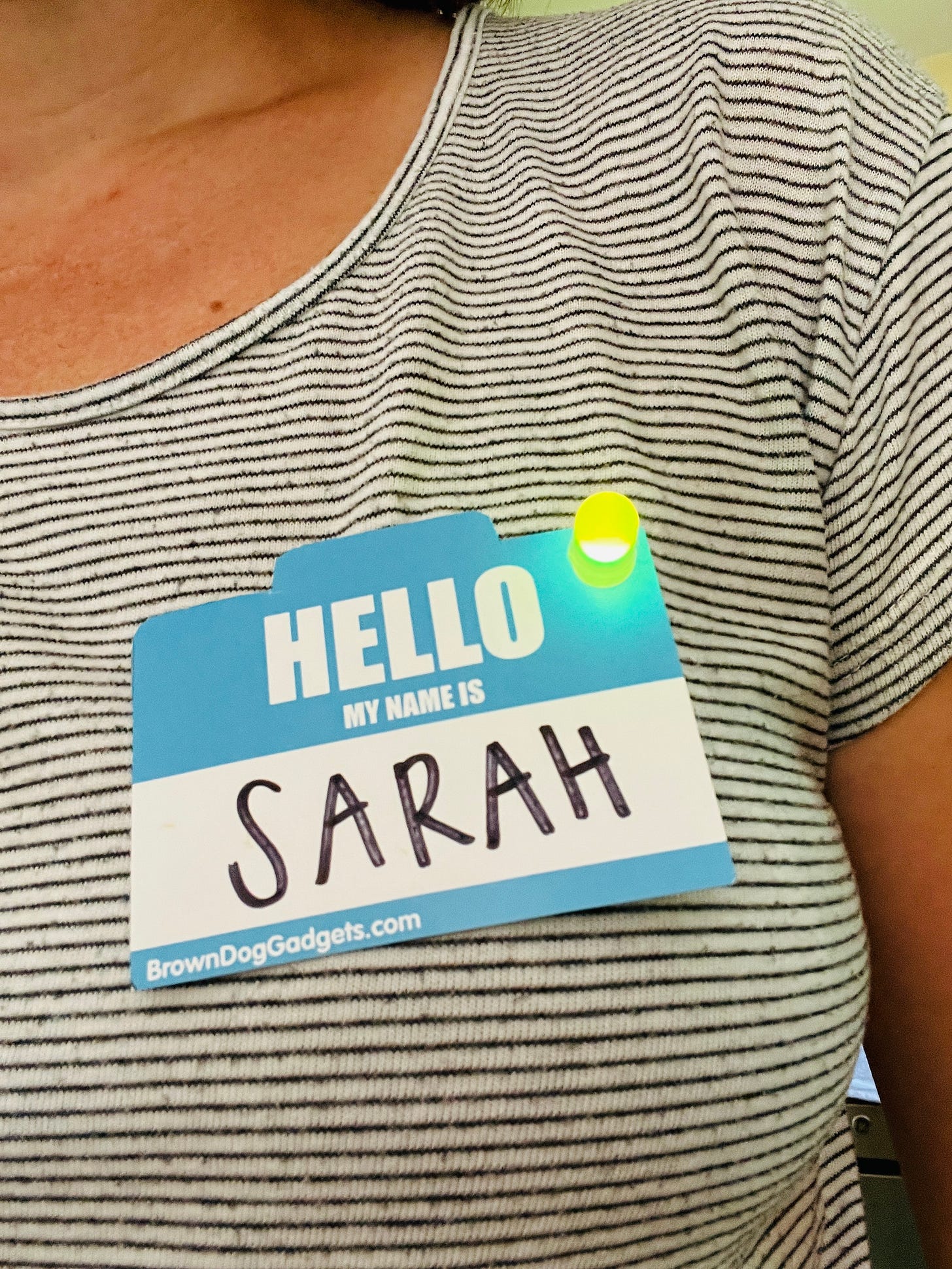
Okay! 👏
I’ve got a fun collaboration for you today, focusing on mental health books — Ashley Holstrom, of the newsletter Crooked Reads, reviewed the books for adults, I covered the books for children.
Ashley came up with the title of this post when she published her own version and I love the language — the idea that the spectrum of mental health books runs from heavy (the ones that can be downright painful to read) to soft (the ones that are on the lighter side, including ones meant for kids).
Even if you don’t suffer from mental illness — or love someone who does — we can all use these books at one time or another. And sometimes, even if a book doesn’t speak to your specific experience as a child or an adult, it’s still comforting to know you’re not alone.
Let’s get to the books.
The children’s books
Fear/anxiety: Alvin Ho: Allergic to Girls, School, and Other Scary Things by Leonore Look, illustrated by LeUyen Pham (2008)

Alvin Ho is an intensely lovable character — an Asian American second-grader “who comes from a long line of farmer-warriors” who is nevertheless afraid of many, many things — whose escapades in this first book in a series are not only wonderfully human and relatable (he experiences selective mutism at school, he borrows and accidentally breaks a childhood toy of his father’s, he thinks chicken pox comes from actual chickens and secretly visits the house of a stricken classmate to try to catch both the chicken and its pox), they are wonderfully told.
Pham’s tiny ink sketches are included on at least every other page and add to the sense of amusement and fun in this book — a feature that would make it a good choice for a child just past early chapter books, as it’s just a bit more complex — but Look steals the show completely with her hilarious tone, which deftly captures the spirit of not only Alvin but many kids his age.
Alvin is a gem and so is this book that introduces him to the world. I highly recommend getting to know him.
Virginia Wolf by Kyo Maclear, illustrated by Isabelle Arsenault (2012)

Based loosely on the relationship between real-life Virginia Woolf and her sister, Vanessa Bell, the story opens with Virginia waking up one day feeling “wolfish” — she makes wolf sounds and does strange things, turning her friends away at the door, and yelling at Vanessa in an increasingly loud voice things like “DO NOT BRUSH YOUR TEETH SO LOUDLY”). Vanessa tries to help but Virginia rejects her, until Vanessa tenderly coaxes Virginia into admitting there is a place that would make her feel better, a place she’d like to go called “Bloomsberry.” (Book nerds, this book is full of marvelous little literary nods.)
While Virginia naps Vanessa begins to create Bloomsberry on the walls of their room — when Virginia wakes up, she joins in, and together the sisters create a magical space that not only helps Virginia out of her ill-tempered mood but lifts the energy of the whole house.
Part art-therapy story (an aspect that is brilliantly conveyed by Arsenault’s wonderful gouache, ink, color crayons and pencil illustrations), part ode to the sometimes-balm of sisterhood, this is a whimsical yet insightful book about the “wolf” inside all of us, and how art — and understanding, compassion, and support — can soothe us until the growling passes.
Wemberly Worried by Kevin Henkes (2000)
Wemberly is a small mouse with big worries — she worries about everything, even about worrying itself, and with school starting soon, she has a long list of new worries: “What if no one else has spots? What if no one else wears stripes? What if no one else brings a doll? What if the teacher is mean? What if the room smells bad? What if they make fun of my name? What if I can’t find the bathroom? What if I hate the snack? What if I have to cry?”
When she finally arrives at school and her new teacher introduces her to someone — another girl with the same worried expression on her face — Wemberly eases into a new friendship and a new concept: that she is not alone in her worries, nor is she is alone in the world.
Henkes’ sweet story and always-charming, warm watercolor and pen illustrations creates a space for readers ages 4-9 to empathize and identify with Wemberly and her worries (especially if they are worriers themselves). This story does have a happy ending, but it’s more about Wemberly’s new friendship than a “fixing” of her worries or the way she is — an entirely refreshing message about accepting ourselves and our feelings, just as we are.
Therapeutic Storytelling: 101 Healing Stories for Children Susan Perrow (2012)
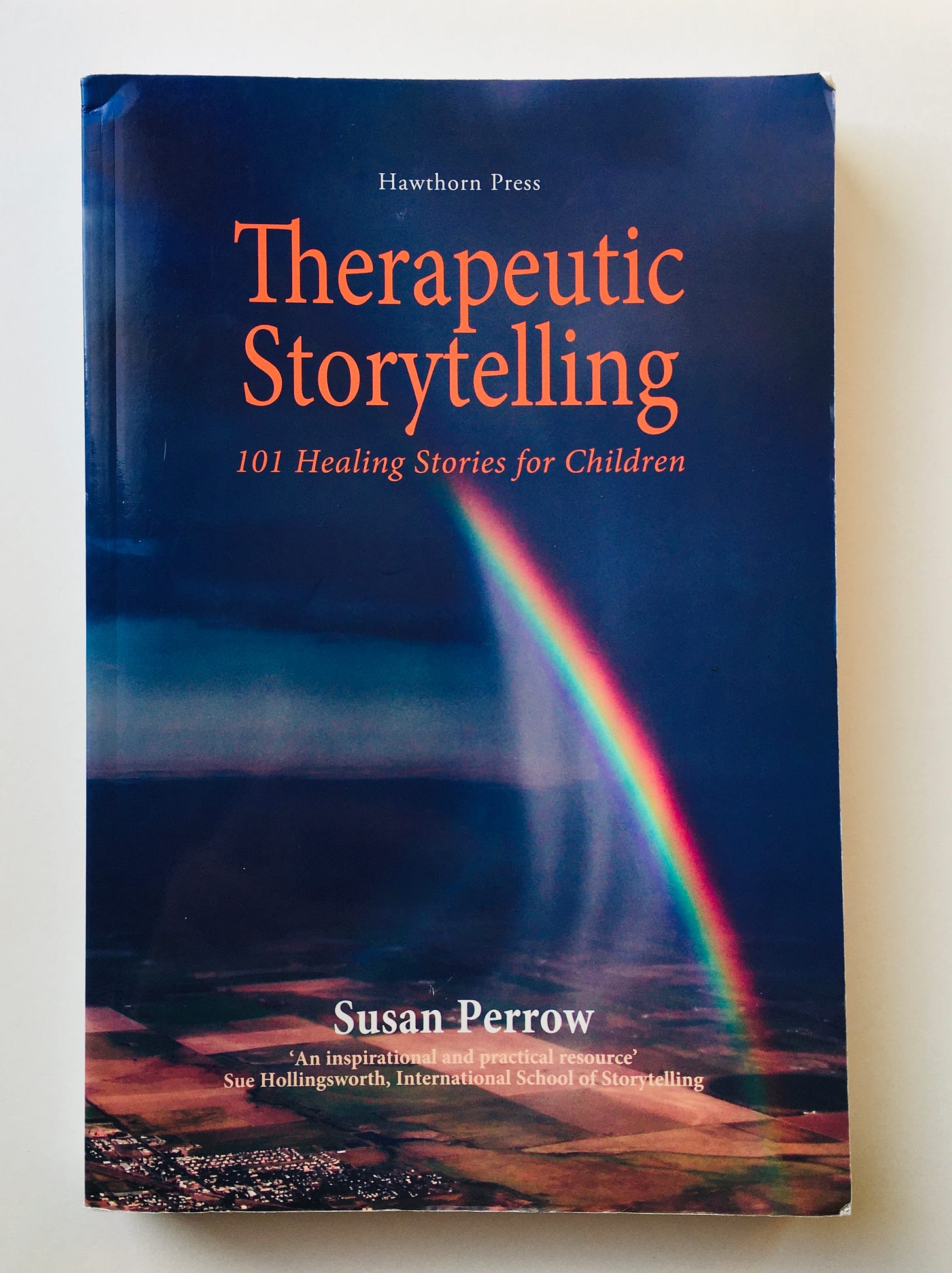
Working through life’s problems by reading books isn’t a magic bullet, but over the years, it has been genuinely helpful for my children (not to mention me).
Susan Perrow’s entire career focuses on storytelling to this end — her work centers around stories written specifically to help address challenging behaviors and/or traumatic situations. And lest you think you need to have a traumatic situation to address (we didn’t, until we did), here are a few examples of topics from Therapeutic Storytelling: stories for anger/aggression/hitting/scratching/biting, stories for anxiety/insecurity/fearfulness, stories for fussiness/complaining, stories for lack of confidence/resilience.
If you are dealing with some of life’s harder things there are also sections that address illness and death; separation, divorce, and blended families; even sexual abuse. Some of Perrow’s titles are strictly stories; others, like this one, go a step further and explain a bit about how to come up with or write healing stories of your own.
But: do these work? In my experience, yes. They’re not perfect medicine, but whatever we have struggled with over the years, these stories have made a difference.
The adult books
The Crying Book by Heather Christle
The Crying Book is what the title says: a gorgeous collection of vignettes, poems, and literary passages about crying. While writing the book, Heather Christle’s life was an emotional rollercoaster—a friend just died by suicide, she’s pregnant with her first child, and the United States is under a horrifying administration—and tears are the one central, unchanging thing. Christle digs into the science of tears and finds that the body produces different types of tears, with different chemical makeups and viscosities, to keep eyes lubricated, to flush out foreign objects, and to show emotion. It is a fascinating, scientific, cultural look at the first way we know to show emotion.
The Collected Schizophrenias: Essays by Esmé Weijun Wang
Esmé Weijun Wang has lived much of her life with the collected schizophrenias —because schizophrenia itself is an umbrella term — and this book is an extraordinary collection of essays on the topic. She goes deep into her own experiences with the illness, as well as the history of psychiatry and the failure to properly diagnose schizophrenic disorders. The Collected Schizophrenias is a poignant and vulnerable look at an often misunderstood disorder.
The Comfort Book by Matt Haig
Matt Haig’s collections of vignettes about living with mental illness are top-notch. The Comfort Book is the softest of the series, sitting alongside Reasons to Stay Alive (my fave) and Notes on a Nervous Planet (also good), and focusing on the little joys found in the world. It’s the perfect book to keep in your back pocket, in case of emergency.
A big thank you to Ashley for collaborating on this fun idea (and for being a supportive fellow Bookstacker, as well)!
If you’re a book lover, be sure to subscribe to Crooked Reads — Ashley’s picks are consistently excellent (and go well beyond the same-old titles you’ll come across everywhere else).
Thanks for reading today and always,
Sarah
This newsletter is made possible by subscribers. The best way to support it is to: 📤 Share it with someone who may also like it, 🛒 shop for books via my Bookshop.org storefront (I receive a small commission when you do), 💸 or become a paid subscriber. Right now I’m offering a free 30-day trial until August 19:

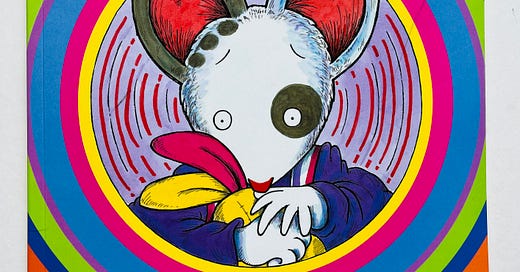



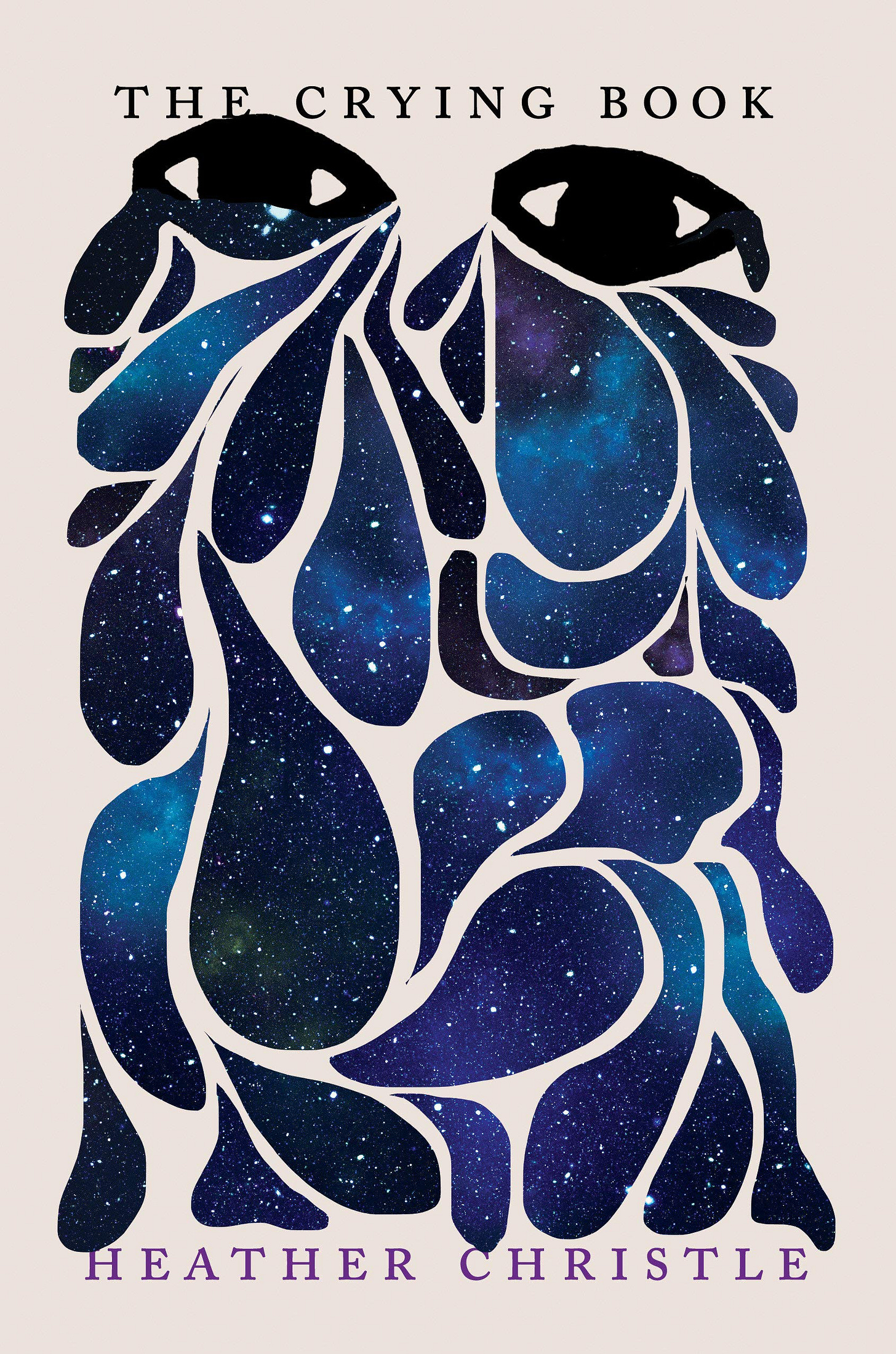

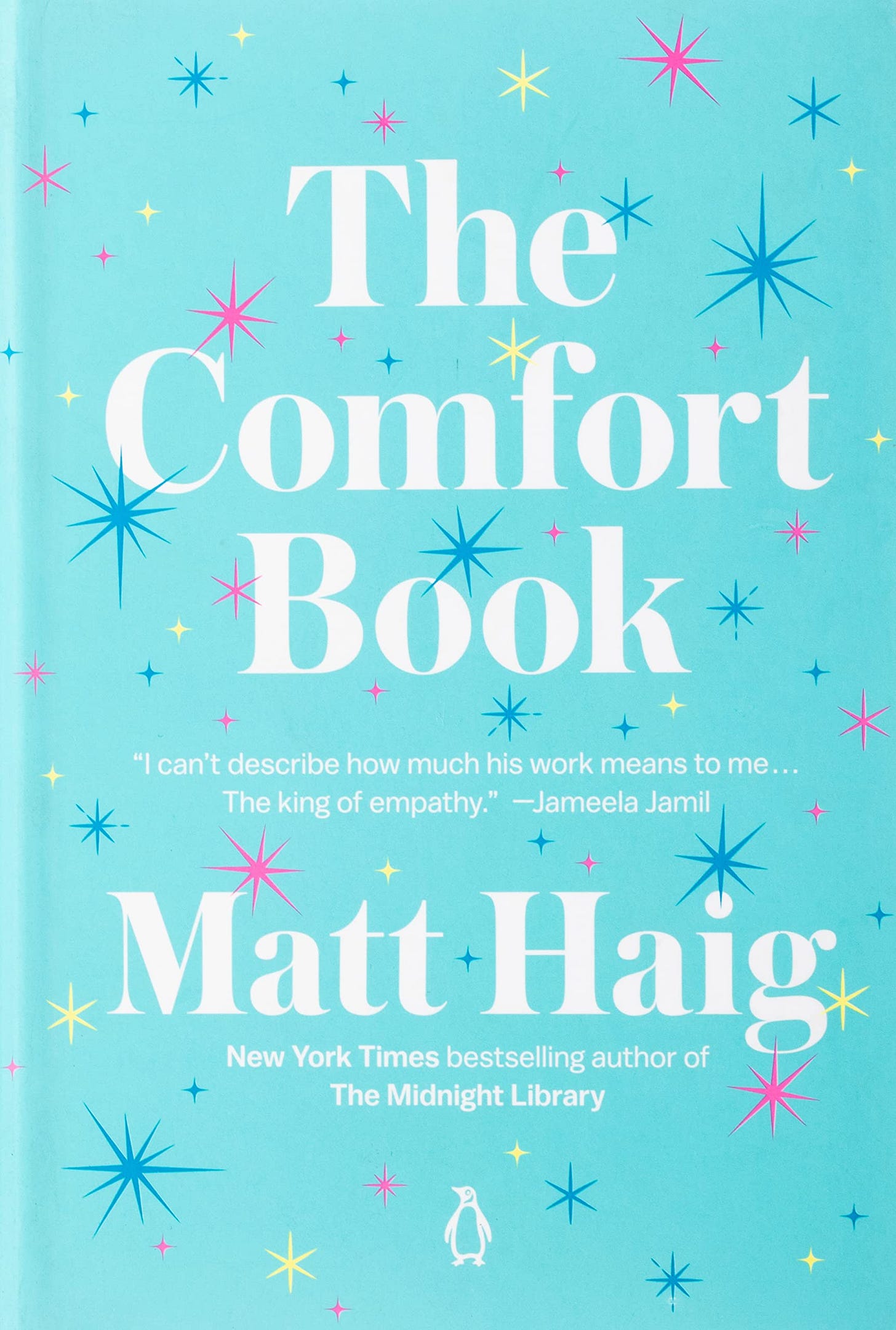

Love the descriptions and the book topics. Thank you for this!
What a lovely collaboration.